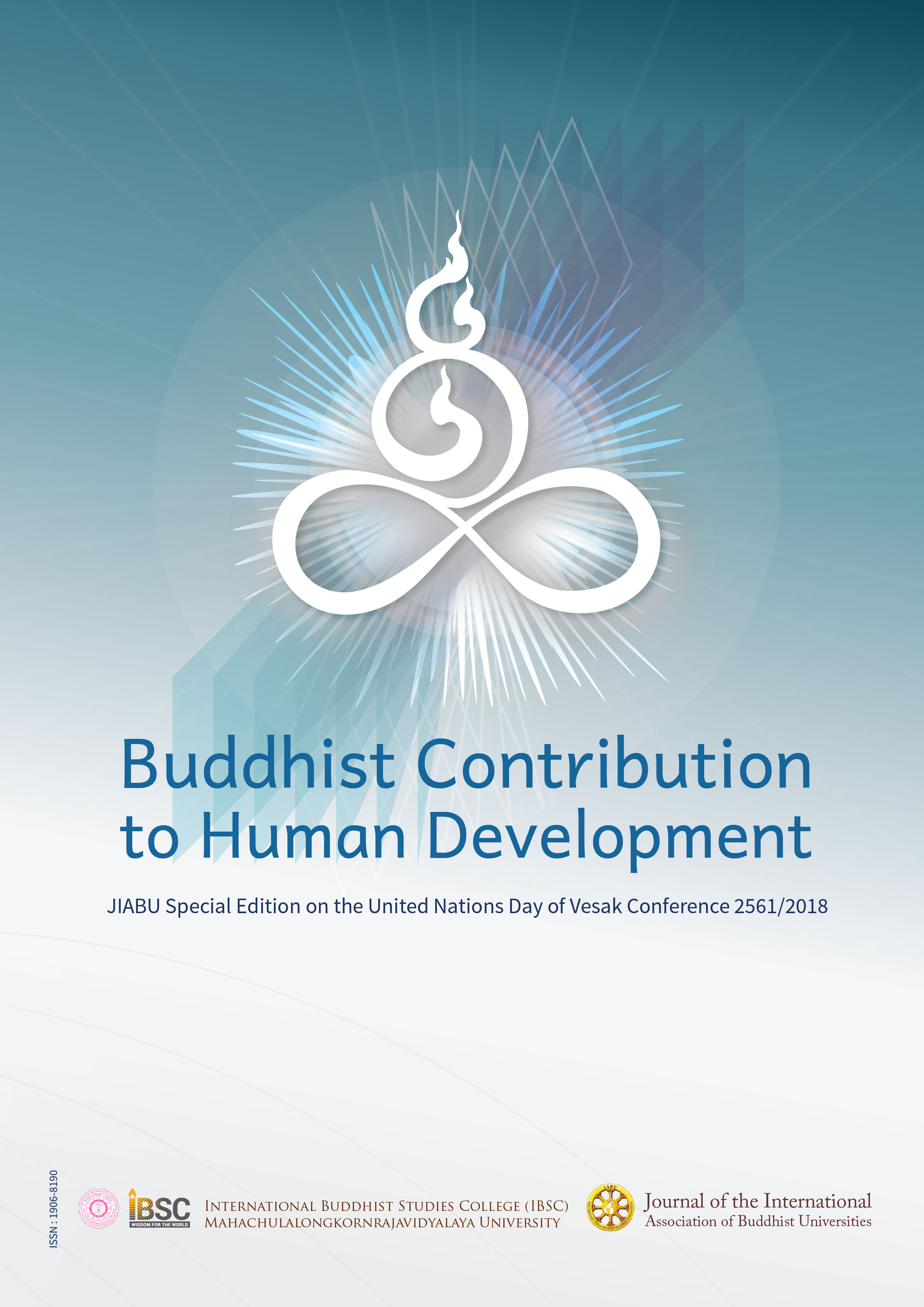Empowering Youth through Buddhist Education
Main Article Content
Abstract
This paper focus is on how we can empower youth through Buddhist education.
It looks at some of the environmental factors and external pressures that the youth of
today have succumbed too. It looks to proves that not only that the empowerment of youth is
possible through Buddhist education; it also proposes that thought the empowerment of the
youth, peace in society is a very tangible goal. The researcher has identified and given a brief
synopsis of numerous Buddhist Sutta that he believes are most suited to the empowerment
of today’s youth.
Article Details
Views and opinions expressed in the articles published by The Journal of the International Association of Buddhist Universities (JIABU), are of responsibility by such authors but not the editors and do not necessarily reflect those of the editors.
References
India: University of Calcutta.
Bronkhorst & Johannes (1993), The Two Traditions of Meditation in Ancient India,New Delhi
Motilal Banarsidass.
Davidson & Ronald.,(2002), Indian Esoteric Buddhism, Columbia University Press.
Gombrich, R.,(1988), Theravada Buddhism: A Social History from Ancient Benares to Modern
Colombo, Routledge and Kegan Paul.
Sylaja /OIDA International Journal of Sustainable Development 08:08 (2015) 69.
Suraj Narainn Sharma, “Buddhist Social and Moral Education”, Parimal Publications, 1994,
P. 48.
Altekar, A. S., “Education in Ancient Indian”, p.77.
http://www.ssrn.com/link/OIDA-Intl-Journal-Sustainable-Dev.html
Ko Lay U, Guide to Tipitaka, Buddhanet e-book library, 1984.
K. Sri Dhammananda, The Dhammapada, The Penang Buddhist Association, Malaysia,
2007.


